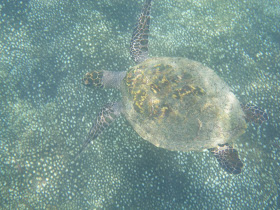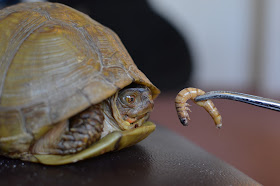 |
| The fog soon burnt off for a warm and sunny day down here in Mill Basin, Brooklyn. |
I love habitats that occur near water, whether fresh or salty. When you are near the water, there is just so much wildlife gathering there for what ever reasons they may have. I decided to go back to the salt marsh down in Mill Basin, where I last saw my lovestruck osprey pair.
We just ended a few days of rain and after a long foggy morning, the sun came out. All the moisture and plant life made the area humid and with the sun, it was fairly warm. The sun shined strong enough to give me a little color, which for this fair skinned lady is red.
I started my walk down the western side of the basin. I walked along the beach finding many stranded moon jellies who just couldn't escape low tide. I also accidentally disrupted a horseshoe crab. I thought he was dead, and being the person that loves to touch things, I went to pick what I thought was a dead horseshoe crab, but instead it was a rather lively male horseshoe crab. I did my best to return him back to how I originally found him... half buried in the sand. After encountering swans and brant geese along the shore, I wandered down further where I found terns, sandpipers, and plovers. Beyond the beach, a trail heads through a patchy forest with open specs of grasses. I found it so peaceful to be surrounded by green with no signs of the city except for the occasional siren that was muted well by all the leaves around me. I saw some birds and even more exciting lots of insects, including dragonflies, which don't fly much except for on warm sunny days.
 |
| Obligatory pretty preening swan picture. |
 |
| Mourning Doves feed on the algae at low tide. |
 |
| Did you know horseshoe crabs are actually closer relatives to spiders and arachnids instead of crabs? |
 |
| Plovers |
 |
| I think the best match would be semipalmated plovers. Shore birds confuse me. Any better ideas? Let me know! |
 |
| A moon jelly and my foot, for size comparison. |
This female yellow warbler cracked me up, I love the middle picture.
 |
| A little blue butterfly on a clover flower. If you know how not big this flower is in real life, you can appreciate the little-ness of the little blue. I have found out from a friend, that this butterfly is actually an Eastern long-tailed blue. Pretty cute, right? |
 |
| I love the tiny tail coming off the rear half of the wings. |
 |
| Yellow throated warblers were everywhere. |
 |
| A brown headed cowbird. These birds are parasitic nesters. They lay their eggs in other birds' nests. Their babies hatch and are stronger than the host parent's young or hatch before them. The baby cowbird outcompetes its "siblings" and is reared by another bird species. |
 |
| An indian skipper, a small butterfly. He sat super still, which skippers usually don't do. |
 |
| My stumper of the day.... I think it is a willow flycatcher. That was my best match. |
 |
| A mocking bird was acting funny, holding its wings out wide, exposing the white patches that hide under their closed wings. After some inter web research, I learned that mockingbirds are flashers. Not in the creeper in the dark alley way, but behaviorally this communicates something to other mockers or potential predators. Who or what it is communicating to though, is still debated. Learn more about mockingbird flashing here. |
Upon returning to the basin from my walk along the trail, I noticed that a few Diamondback terrapins were sunning themselves on some old pilings. I couldn't help but laugh at one of the turtles that was trying so hard to get a good basking spot but just kept falling backwards into the water. These turtles are protected and regulated in New York state as they were for a while over collected, because they were and are popular as a food source. The terrapins are the only turtle in North America that can inhabit brackish water and in the area, they are found in the space we call the
Gateway National Recreation Area.
 |
| Diamondback terrapins are reptiles, they cannot control their internal temperatures - they don't metabolize and get their energy the way mammals and birds can. They get their energy and warmth from the outside, the sun, they are ectothermic -- just like I do with the kids, ecto=outside, thermic=temperature, put it together now! |
The osprey pair looked like they had a lot of work cut out for them. One of them was sitting on the nest and vocalizing from time to time. The other was not seen. I sat and ate my granola bar and tried to wait and see if anyone would return, but the sun was beating down on me and I had no sunscreen on (poor planning). I did see an osprey flying around earlier, the other mate could have possibly been off fishing. Looks like I'll need to visit again to hopefully see some chicks if all goes well for them!
 |
| One very patient parent.... |
And... a few other fun things I saw:
 |
| While Osprey watching, I noticed this blurry guy-- common loon? Looks like he was a bit late on the migration memo... |
 |
| Fiddler crab watching is always quality entertainment, these guys are hilarious, with the males waving their large claws in the air, but scattering when you walk by into the nearest burrow. Not so tough, are you now? |
 |
| On my way out this red-tail flew and took a perch. Look, it's a youngster who is just growing in the first feathers of it's red tail! Congrats, dude. |





























































